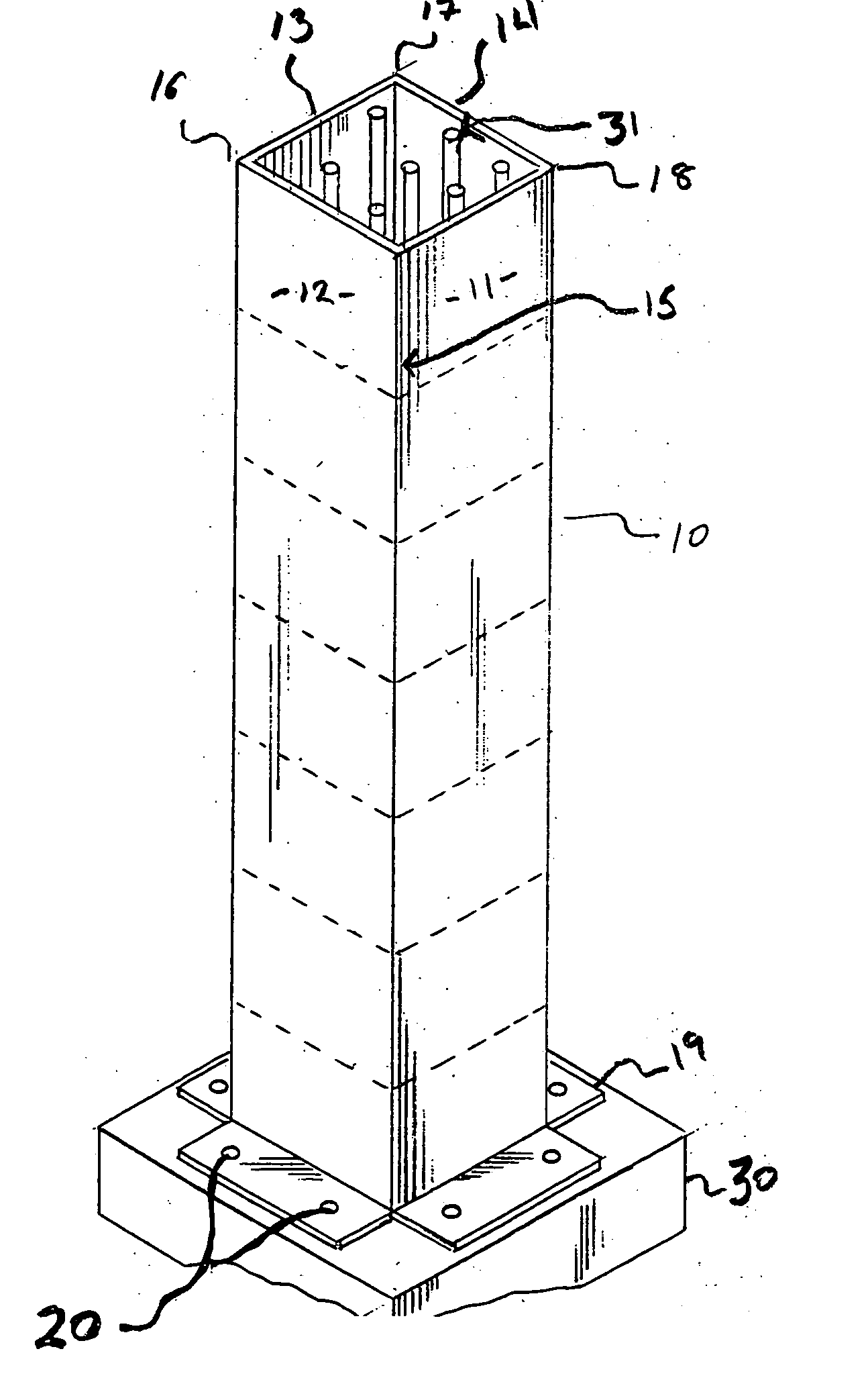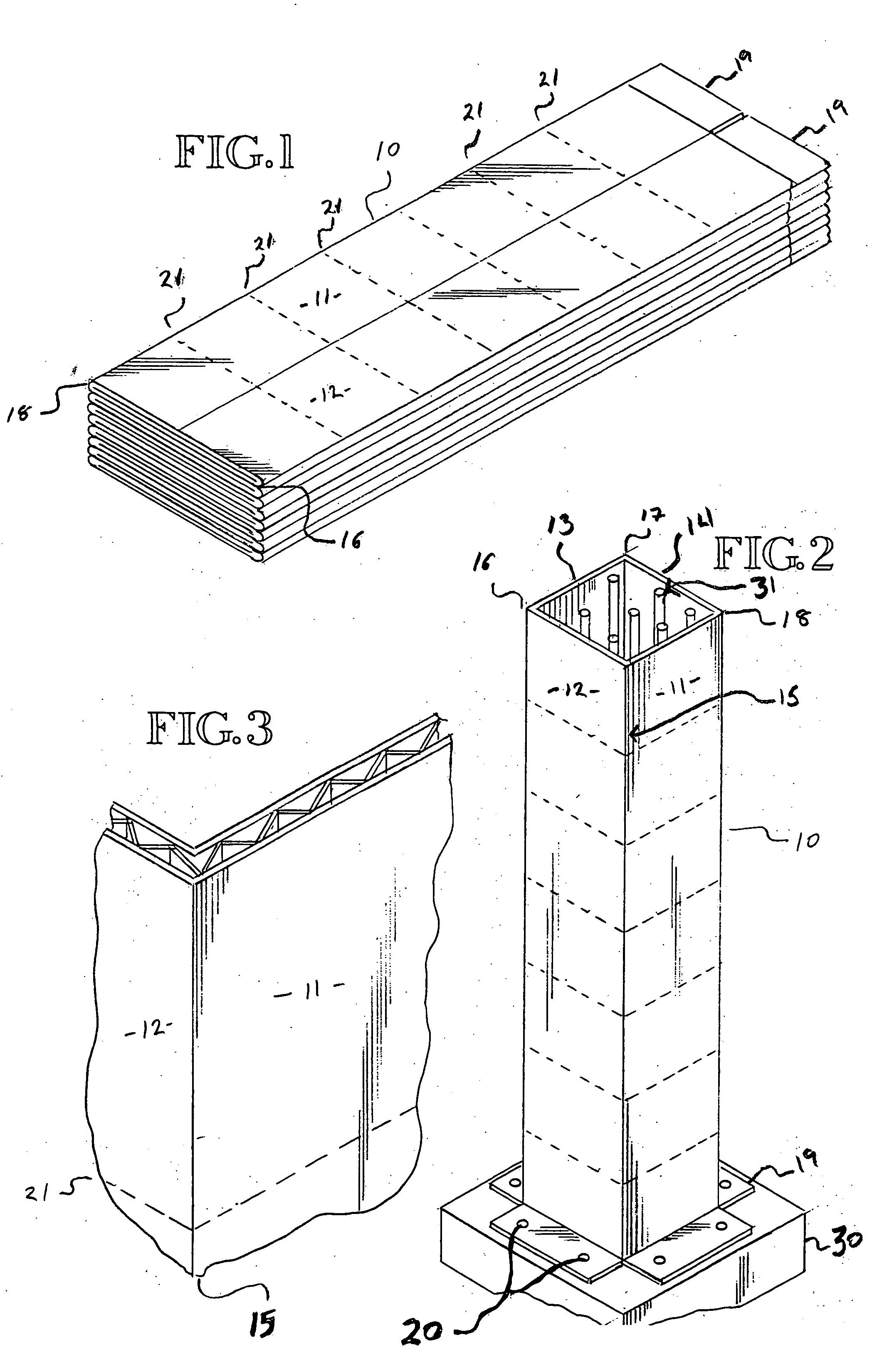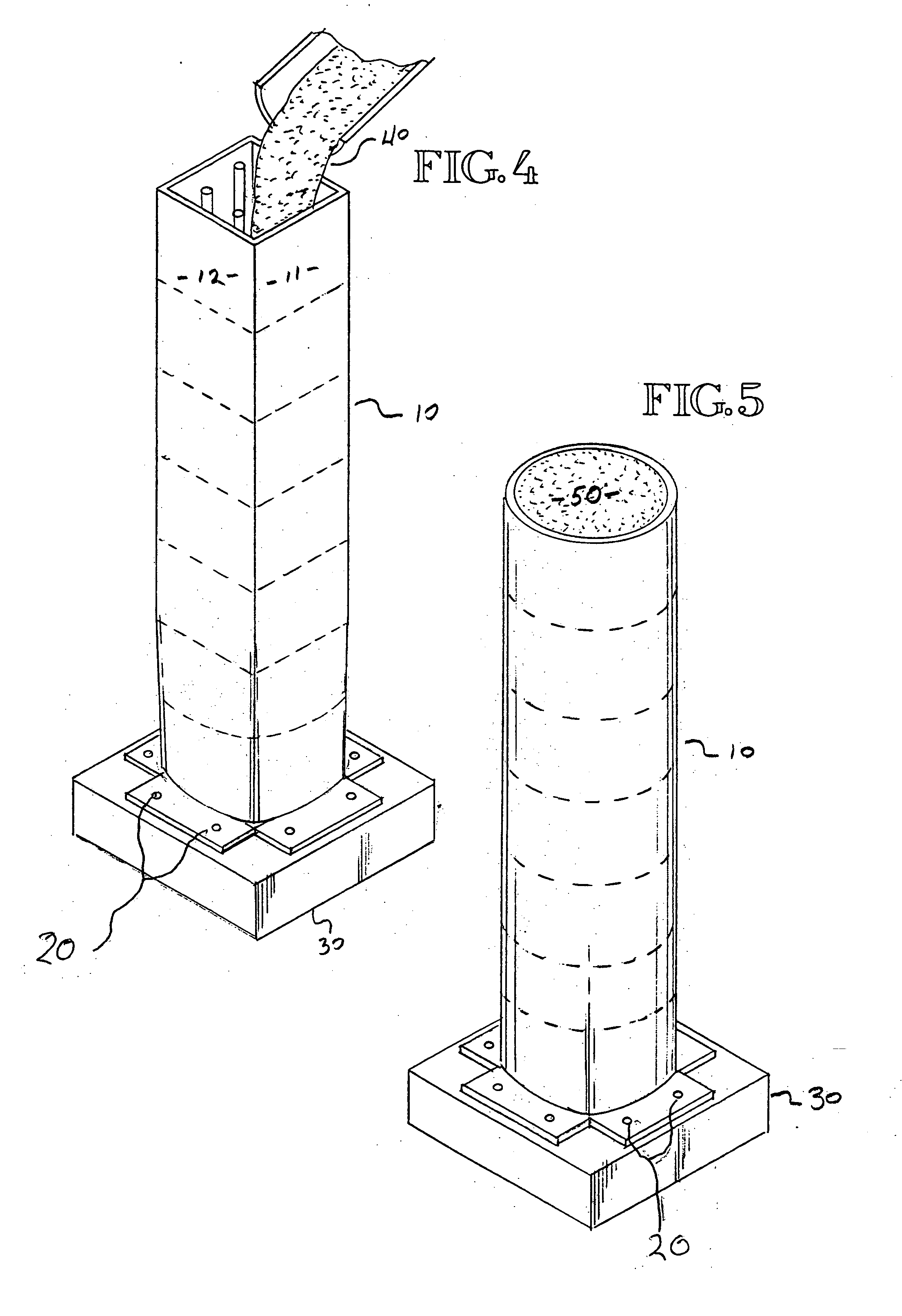Forming apparatus and method for constructing concrete columns
- Summary
- Abstract
- Description
- Claims
- Application Information
AI Technical Summary
Benefits of technology
Problems solved by technology
Method used
Image
Examples
Embodiment Construction
[0022] Turning now to the drawings, the invention will be described in a preferred embodiment by reference to the numerals of the drawings wherein like numbers indicate like parts.
[0023]FIG. 1 shows a preferred embodiment of the pier / column form disclosed herein wherein several forms 10 are folded and stacked for storage or transportation to a construction site. As can be seen in FIG. 2 and FIG. 3, the forms disclosed herein are constructed from corrugated plastic and have four side walls that define an elongated form with an interior for the placement of concrete, and having a generally square cross sectional shape when viewed from above.
[0024] In at least one preferred embodiment, the form is constructed from a single piece of corrugated plastic that has a plurality of seams / folds, which define the corners of the form. The free edges of the sheet of corrugated plastic can be overlapped and connected with an adhesive such as construction glue of the like or other connection means...
PUM
| Property | Measurement | Unit |
|---|---|---|
| Length | aaaaa | aaaaa |
| Electrical resistance | aaaaa | aaaaa |
| Adhesivity | aaaaa | aaaaa |
Abstract
Description
Claims
Application Information
 Login to View More
Login to View More - R&D
- Intellectual Property
- Life Sciences
- Materials
- Tech Scout
- Unparalleled Data Quality
- Higher Quality Content
- 60% Fewer Hallucinations
Browse by: Latest US Patents, China's latest patents, Technical Efficacy Thesaurus, Application Domain, Technology Topic, Popular Technical Reports.
© 2025 PatSnap. All rights reserved.Legal|Privacy policy|Modern Slavery Act Transparency Statement|Sitemap|About US| Contact US: help@patsnap.com



